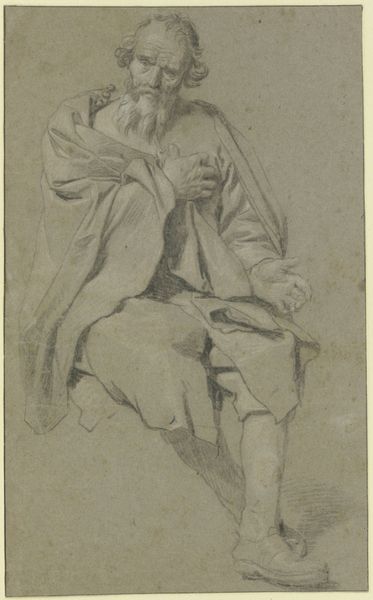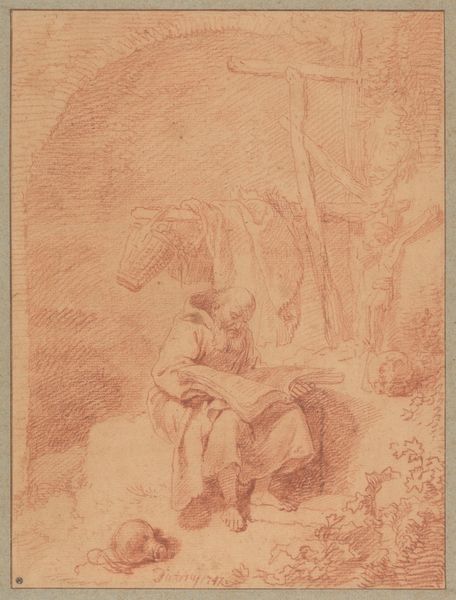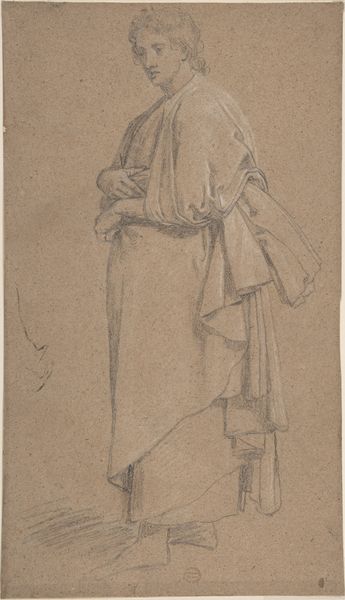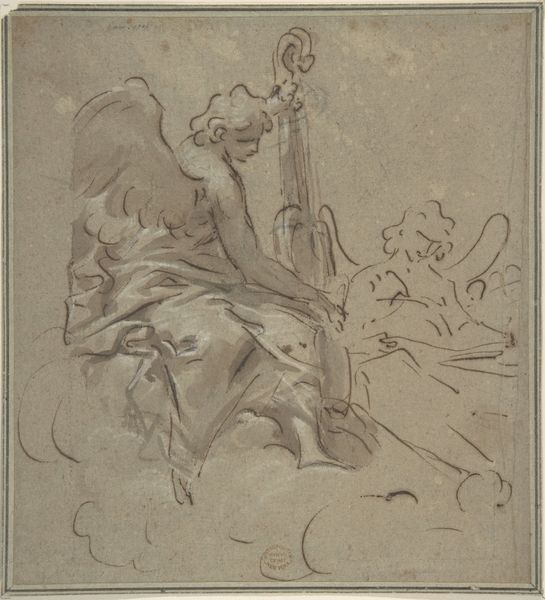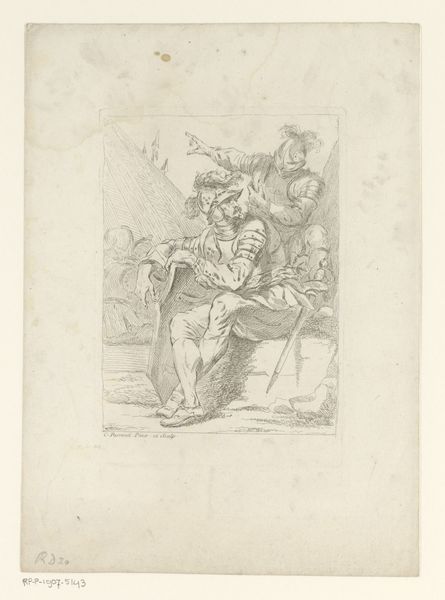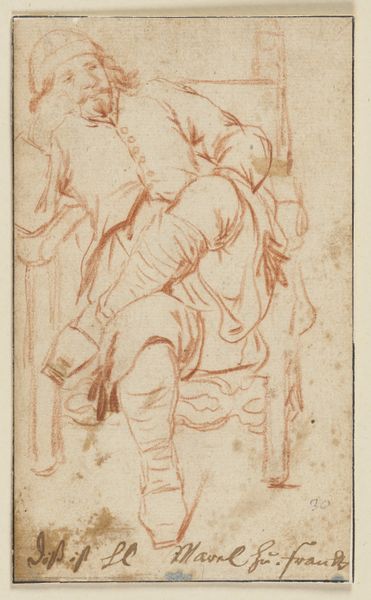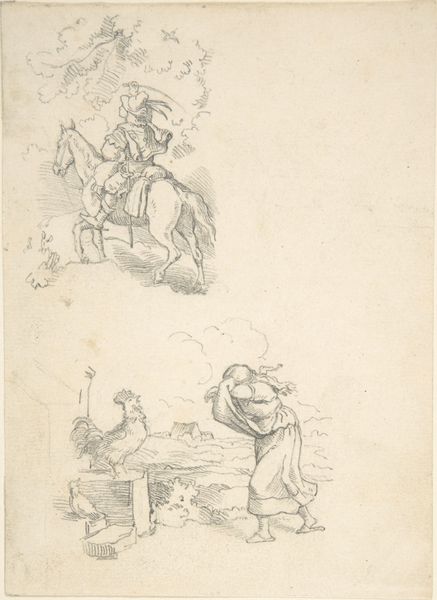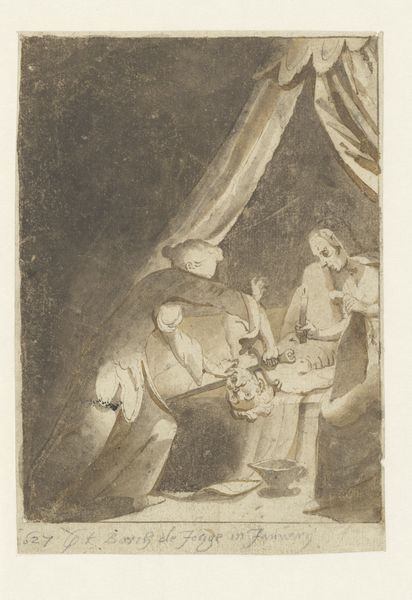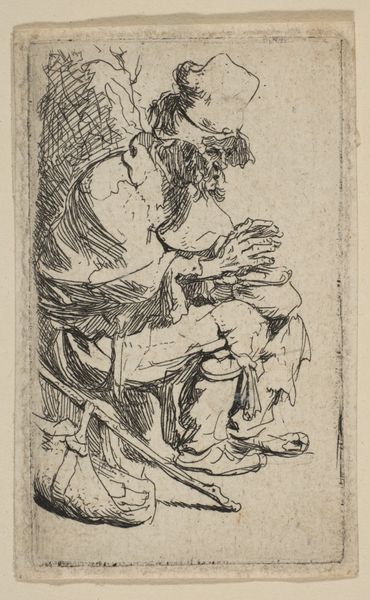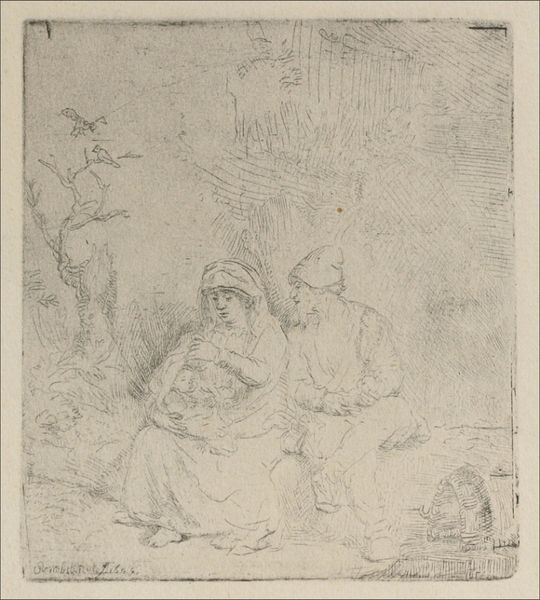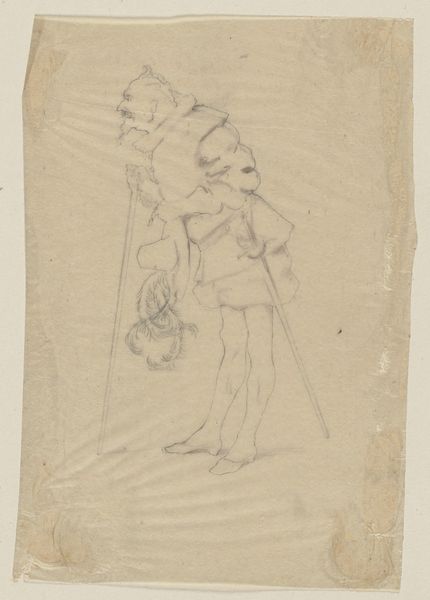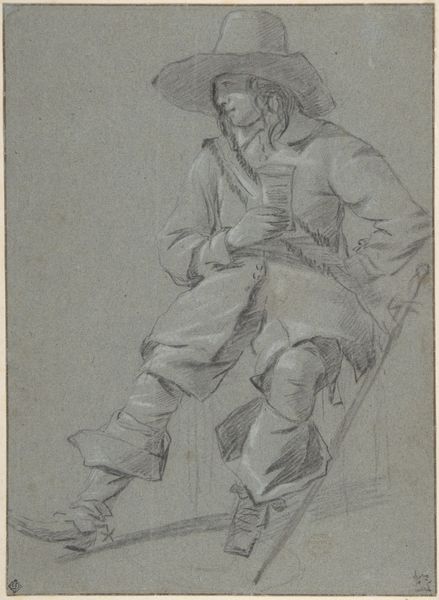
drawing, print, paper, ink, pen
#
portrait
#
drawing
#
allegory
#
baroque
# print
#
classical-realism
#
charcoal drawing
#
figuration
#
paper
#
ink
#
pen
#
history-painting
#
academic-art
Dimensions: 210 × 168 mm
Copyright: Public Domain
Curator: Here we have "Minerva with Two Putti," an undated drawing attributed to Jacob de Wit, found here at the Art Institute of Chicago. It's rendered in pen and ink on paper, showcasing a classical allegorical scene. What's your immediate reaction? Editor: Well, it feels very preliminary, almost like a sketch figuring out a larger composition. I’m interested in the texture—the visible pen strokes and how they define form with such economy. Look at the folds of Minerva's drapery; you can really see the artist thinking through the weight and fall of the fabric. Curator: That sense of searching for form is absolutely present. This likely functioned as a study for a larger history painting, which, during the Baroque and Academic periods, was considered the highest genre. Note how Minerva, goddess of wisdom and strategic warfare, is central, attended by putti symbolizing inspiration and learning. De Wit’s strategic placing of her within this group creates a really interesting tableau. Editor: The materials speak to that preparatory function. Pen and ink are relatively inexpensive and easily workable compared to oils or fresco. This wasn't about preciousness; it was about quickly realizing an idea, possibly for client approval or workshop planning. And look at the verso: We’re getting the sense that the artist wanted us to look on either side to explore the whole scene. Curator: Precisely. It tells us something about artistic patronage, as well. Works like these reveal the machinery behind grander commissions—the dialogues between artist, patron, and audience regarding classical virtues. De Wit skillfully merges these social and historical forces. Editor: The materiality even highlights the labor of creation. Those confident lines belie the thought process of the maker, reminding us of the hand involved in translating myth into form. Think about where that labor happens; how does this drawing change depending on the studio’s or patron’s demands? Curator: Ultimately, pieces like this help us reconsider the power structures embedded in art creation. By acknowledging both De Wit’s skill and his position within a hierarchical art world, we can engage with this artwork more critically. Editor: I agree. This drawing acts as an exciting portal to observe the act of making and the social conditions in which it takes place. It pushes us to reflect upon our own acts of looking and understanding the art on our own terms.
Comments
No comments
Be the first to comment and join the conversation on the ultimate creative platform.
